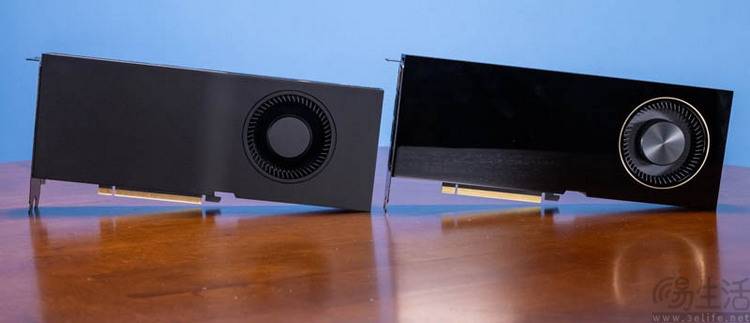Home >Technology peripherals >AI >'The potential of AI PC hidden in old computers'
'The potential of AI PC hidden in old computers'
- 王林forward
- 2024-01-06 16:53:57763browse
If you have paid attention to the recent PC market, you may have noticed that some "AI processors" integrating dedicated NPU components and the "AI PC" equipped with them have become the focus of the market.

To be fair, the most prominent feature of these so-called "AI PCs" is that they are generally equipped with AI-related software and services out of the factory, and can implement many AI functions based on local hardware acceleration, including but not limited to AI voice dialogue, AI cutout, AI video enhancement, AI painting, AI article summary, etc.
From the perspective of ordinary consumers, the functions of "AI PC" will naturally feel very novel and interesting. Therefore, the entire industry chain also has hope for this concept. People expect "AI PC" to not only drive sales of new products, but also promote the widespread application of artificial intelligence-related technologies in the field of personal computers.

However, can the current "AI PC" alone accomplish the important task of "promoting the use of AI technology in the PC field"? At least in our view at Sanyi Life, there are some difficulties.
Why do you say that? First of all, "applications using AI technology" appeared on PCs much earlier than the concept of "AI PC". In other words, those so-called “AI PC” products today are not the earliest computers that can run AI code.

For example, the familiar AI drawing program, or the various AI processing filter functions in Photoshop, or the AI microphone noise reduction and AI green screen (portrait cutout) functions in the game live broadcast software, they are all Implemented based on AI code. These codes are either run using the DLBoost instruction set or AVX512 instruction set of the CPU, or are implemented based on the Tensor Core core of the NVIDIA graphics card, or based on the GPGPU general computing capabilities of the AMD graphics card.
In other words, many years before the birth of AI processors with integrated NPUs, old computers in the past actually had hardware that could accelerate AI programs. Moreover, some developers and users have become accustomed to the AI environment of these old hardware, so there is not necessarily a strong demand for current AI PCs.

Looking at it from another perspective, comparing the latest, modern AI PCs with those older computers capable of running AI programs, we may find that the new hardware does not even necessarily have a great advantage.
To give the simplest example, in terms of key AI computing power, the latest generation of Intel Core Ultra processors all have 10TOPs integrated NPU, while the competing AMD Ryzen 8000 series mobile APU, integrated NPU The computing power is 16TOPs.

In contrast, the RTX2060 mobile graphics card, which was released in 2019 and has a low positioning, has an integrated AI unit (Tensor Core) with a computing power of 36.9TOPs, while the current mainstream RTX4060Ti 16GB desktop version Graphics card, AI computing power is as high as 353TOPs. As for the RTX6000Ada workstation graphics card, which is sought after by some enthusiasts and is considered the "complete 4090", its AI computing power has reached a terrifying 1457TOPs.
What is the concept? To put it simply, even the so-called NPU of the latest "AI PC" has only a fraction of the AI performance compared to old graphics cards.

Some friends may say that the NPU integrated in the CPU today has a huge advantage in power consumption compared with the graphics card. Indeed, it cannot be denied that the energy efficiency ratio of NPU is indeed several times higher than that of GPU. However, in the face of the huge performance gap between the two parties, this energy efficiency advantage can only be found in thin and light notebook computers. It's just of practical value. But the question is, can thin and light laptops represent the entire PC industry? Can they be considered an "absolutely mainstream product form"? Obviously the answer is a question mark.

Because of this, in our view at Sanyi Life, if the PC industry really wants to promote the concept of "AI PC", or wants to allow the AI-driven application ecosystem to develop well on PCs, then It is actually not enough to just focus on the latest batch of processors and encourage adaptation only for the weak NPUs they are equipped with. To really solve the problem, we still have to liberate the "stock computing power" of a large number of old CPUs and graphics cards, so that they can run AI code and use functions such as AI assistant, AI drawing, and AI writing.

Only in this way can "AI" for PC truly become a brand-new technological experience revolution, not just to sell new hardware or to promote new computers that may not necessarily have superior actual performance. Deliberately created gimmick.
[Part of the pictures in this article are from the Internet]
The above is the detailed content of 'The potential of AI PC hidden in old computers'. For more information, please follow other related articles on the PHP Chinese website!
Related articles
See more- Technology trends to watch in 2023
- How Artificial Intelligence is Bringing New Everyday Work to Data Center Teams
- Can artificial intelligence or automation solve the problem of low energy efficiency in buildings?
- OpenAI co-founder interviewed by Huang Renxun: GPT-4's reasoning capabilities have not yet reached expectations
- Microsoft's Bing surpasses Google in search traffic thanks to OpenAI technology

